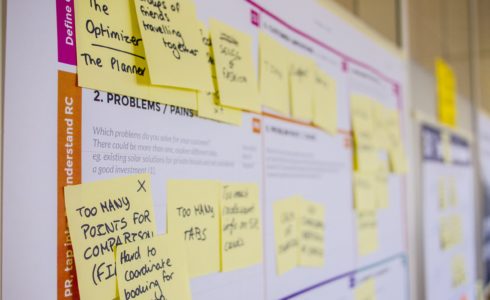Some of us are more competitive than others. Some people will turn a friendly game of Scrabble into a trash-talking fast grab for triple letter scores – while others just want to test their own vocabulary. But when it comes to teams at work, everyone wants to succeed. So how can you spot a productive team that’s really crushing the competition – and more importantly, how can you improve team effectiveness in your own organization? Here are three clues to keep an eye on, and what to do to get there:
1. They Do More
This might seem obvious, but a productive team is one that’s output-heavy. In a business setting, output might include deals closed, product features introduced, inventory moved, or service requests resolved. The most productive teams multiply this effect. They produce more, which often translates into greater revenue – the vital source of the business.
The key here is process efficiency. These high-output teams have streamlined operations so there’s less wasted time and resources. By effectively coordinating roles and communicating with one another, they rise to the top of the stack through an impressive volume of output.
To improve team effectiveness and efficiency with your own group, take a good look at who’s doing what, in what order, and how information is exchanged. You might discover something that’s mucking up the gears and preventing your team from being as productive as it can be.
2. They Do It Better
When it comes to things like inventory or product features, more isn’t always better – especially if the quality isn’t there. A hundred features won’t do you any good if only half of them work. This is where the most productive teams have another advantage: they know that quality is just as important as quantity. Their manager has learned that to improve team effectiveness, it’s not enough to have a streamlined, efficient process – you also need the right people at each stage of the process. The design expert should be designing while the planning expert is planning. They’re playing to the strengths of the team to ensure that all output is completed to the best of everyone’s abilities.
To mirror this, you’ll need to have an in-depth understanding of what talents your team has, and you’ll have to ensure you’re taking full advantage of those talents. There are a number of ways to learn this about your team, but the quickest and easiest way would be to use a personality assessment tool. Once you’re familiar with the information, you’re ready to ensure that each team member is contributing in the most productive way.
3. They’re Happy Doing It
Effective communication is a prerequisite to improve team effectiveness, and a welcome side effect of nailing this factor is an uptick in positive working relationships. When people work well together, everyday tasks become more enjoyable, and when tasks become more enjoyable, morale goes up.
Pro Tip: Try out this team communication activity the next time your team has 30 minutes together!
Positive morale can have a ripple effect on the two other pieces mentioned above: happy employees will work harder (do more) and take more pride in what they do (do it better). And positivity is contagious. It’ll spread throughout the company, and may even get passed along to external customers as well.
Maybe you’re not the type to knock over the Scrabble board if you’re about to lose, but you can’t deny that it does feel great to be on a winning team. And it’s truly a winning feeling when you improve team effectiveness to achieve more, pump out quality work, and get your team interacting on a new level. Keep an eye on how your team is handling these three factors. Who knows – maybe you’re already crushing the competition more than you thought!
{{cta(‘86208e50-24cf-4115-b6cd-e8caeb5d6338′,’justifycenter’)}}








